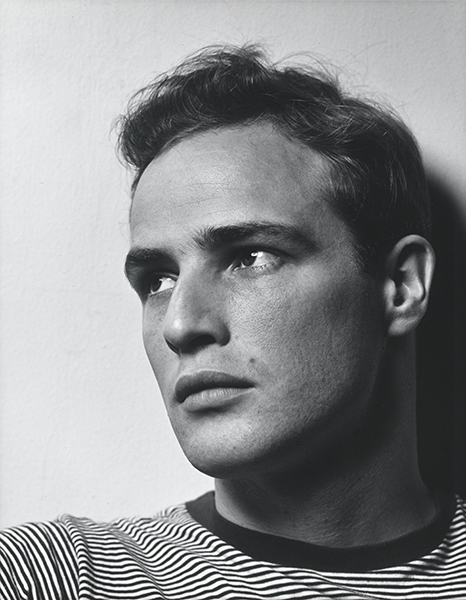Marlon Brando 1924–2004
Philippe Halsman (1906–1979)
Gelatin silver print, 1950 (printed later)

National Portrait Gallery, Smithsonian Institution © Philippe Halsman Archive
Marlon Brando embodied the rebel cool of the 1950s and defined the Method technique of acting. As Stanley Kowalski in A Streetcar Named Desire (1951), Brando created a complex portrait of working-class male sexuality that prompted the first rage for torn T-shirts and blue jeans. In The Wild One (1953), Brando adapted biker style into a charismatic bad-boy attitude that made him a poster boy for rebellion: ever since, leather jackets and motorcycles have been accessories of cool. In On the Waterfront (1954), he gave one of Hollywood’s greatest performances. James Dean worshipped him; Jack Kerouac wanted Brando to play Dean Moriarty in a film version of On the Road. As Don Corleone in The Godfather (1972), Brando reigned over a cast full of his theatrical sons, and his next film, Last Tango in Paris (1972), was a revealing, self-conscious meditation on his persona and the art of acting. Working sporadically for his last three decades, Brando was often sought out for advice by Johnny Depp, Sean Penn, and Ed Norton.

